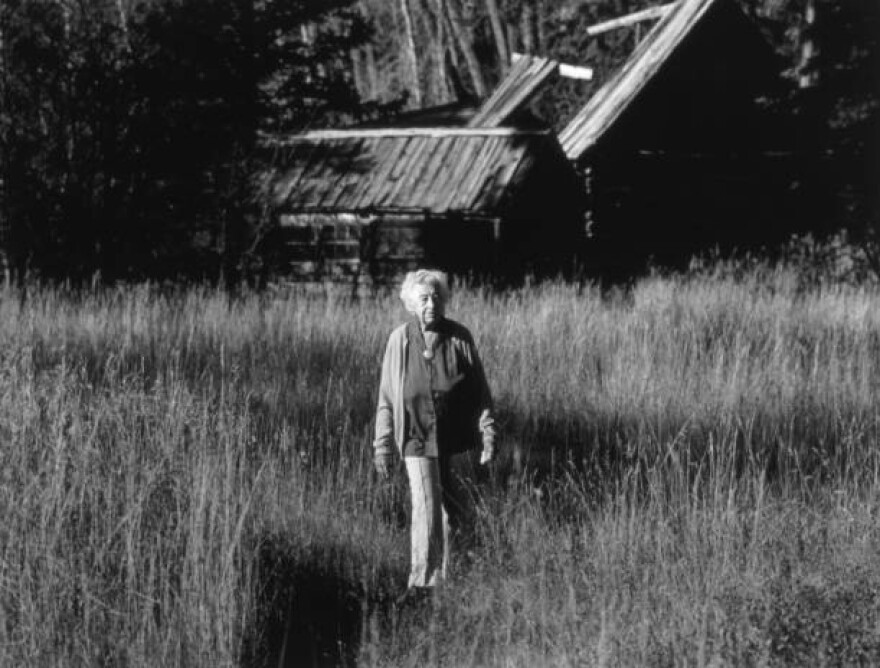In his latest Canyon Commentary, Scott Thybony shares a lesson he learned about the beauty of nature from the "Grandmother of the Conservation Movement", Mardy Murie.
The two of us sat inside her log cabin in a clearing below the Tetons, still snow covered in early May. I had arranged to interview Mardy Murie at her home in Moose, Wyoming, knowing her deep connection to the landscape would help me better understand the character of the Rocky Mountains. As we talked, the conservationist remembered some advice her father had given her. “If you take one step with all the knowledge you have,” she said, “there’s usually just enough light shinning to show you the next step.” She had been taking those steps her entire life.
At 93-years old, Mardy had spent a lifetime working to preserve wild country, ranging from the far reaches of Alaska to Grand Teton National Park. In recognition of her efforts, she received an invitation to the White House in 1964 for the signing of the Wilderness Act. The first woman to graduate from the University of Alaska in 1924, she married biologist Olaus Murie the same year. And on their honeymoon they covered 500 miles by dogsled in the Brooks Range. A couple of years later they moved to Wyoming to study elk and eventually built their log cabin, now designated a National Historic Landmark.

Mardy broke off our conversation for a moment to listen to a ruckus outside the window, her senses tuned to the natural world. “It’s a raven killing a grouse,” she said matter-of-factly.
When I offered to take her to Dornan’s for dinner she agreed on one condition – we walk. She had once spent a day covering 30 miles on foot during their wildlife studies, and didn’t want to pass up a chance to walk half a mile to the restaurant. So the two of us took to the road as Mardy, dressed all in green, shuffled along with determination. When I asked about her efforts to preserve wilderness she turned toward me, holding my attention with her vivid blue eyes. “The message I always delivered to Congress,” she said, “was straight forward. I tried to convince them that beauty itself is a resource.” It was a beauty, she added, essential for the human spirit.
We paused as Mardy took in the view of Blacktail Butte before us, a feature almost lost in the wider setting of dramatic mountains. The sun had settled toward evening illuminating the craggy skyline to the west and casting a warm light on the butte. Its sides sloped downward soft and flowing with stringers of lodgepole pines creasing the face. Suddenly a herd of elk trailed from a draw, balancing the moment perfectly. “Blacktail has its own beauty,” she told me, “and most people overlook it.”
Next morning as I left town my attention shifted away from the stunning peaks rising in the distance. Instead, I found myself searching ahead, waiting for the soft beauty of Blacktail Butte to come into view.



